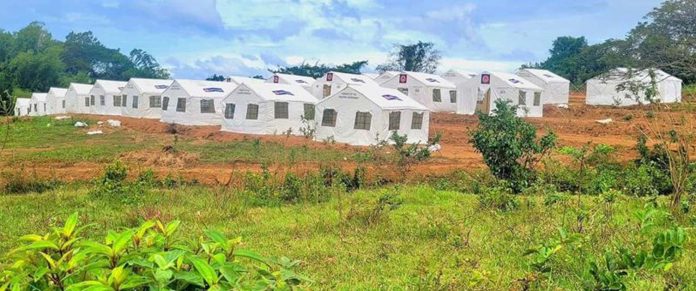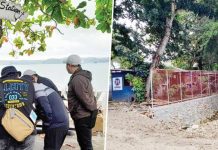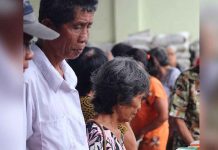
ILOILO City – As fears mount over a possible escalation of Kanlaon volcano’s activity, the Office of Civil Defense in the Negros Island Region (OCD-NIR) has endorsed La Castellana town’s decision to seek a nearer evacuation site in La Carlota City instead of moving displaced families to the more distant “tent cities” in Himamaylan and Kabankalan.
OCD-NIR regional director Donato Sermeno III called the move by La Castellana’s Mayor Rhummyla Mangilimutan “understandable and practical,” given the logistical and emotional strain of displacing residents far from their homes.
“La Castellana is expected to be one of the hardest-hit areas if Alert Level 4 is raised. It makes sense to keep evacuees as close as safely possible to their homes — for access to services, livelihood, and family continuity,” Sermeno said.
Although Himamaylan was included in contingency plans as a primary evacuation site, Sermeno acknowledged that its distance presents major challenges.
“Himamaylan is far. It remains ready, but it would only serve as a temporary evacuation point in case of mass displacement,” he said.
With over 131,000 individuals potentially affected within a 10-kilometer radius should Alert Level 4 be declared, Sermeno said evacuation space is a pressing concern. Local governments may need to repurpose schools and public buildings in adjacent areas to accommodate displaced families.
The national government has since formed a National Task Force Kanlaon, tasked with developing a comprehensive recovery and development plan. One of its main objectives is to identify and establish permanent evacuation sites, especially for those living within the four-kilometer permanent danger zone.
So far, OCD-NIR has documented 81 families still in evacuation centers, with more expected from remote areas. In La Castellana, Sitio Talaptap and Sitio Nato-A have been identified as safe relocation sites based on hazard maps.
The provincial government of Negros Occidental is considering acquiring land in Talaptap for permanent resettlement, pending technical validation.
Meanwhile, although the Himamaylan tent city remains empty, it has been fully equipped and is on standby should the alert level escalate. Sermeno explained the strategy: “We’re keeping displaced persons near their communities while we can. If we relocate them too far, they lose access to jobs and schools.”
With classes resuming on June 16, some schools have cleared out evacuees, prompting the construction of temporary shelters using family tents provided by OCD and other agencies. Currently, there are:
* 10 tent sites in Canlaon City
* 8 temporary shelters in La Castellana
* 1 site in La Carlota
Limited school spaces are still accommodating evacuees from high-risk areas such as Sitio Cabagnaan, which remains within the extended danger zone.
Aside from shelter, the government has mobilized comprehensive support services. The Department of Health (DOH) is monitoring health conditions in evacuation centers, while the Department of Social Welfare and Development (DSWD) continues to distribute food packs. Due to weather-related delays, the Negros Occidental provincial government has stepped in to provide hot meals, often prepared by evacuees themselves.
“We want our IDPs to experience a sense of normalcy and productivity even in displacement,” Sermeno said.
The Technical Education and Skills Development Authority (TESDA) has launched livelihood training programs in some evacuation sites, while DSWD provides psychosocial support to help residents cope with the trauma of displacement.
As the situation remains volatile, Sermeno urged all stakeholders to remain vigilant and united. “We hope the situation doesn’t worsen, but we must be prepared. Our goal is to ensure no one is left behind.”/PN





